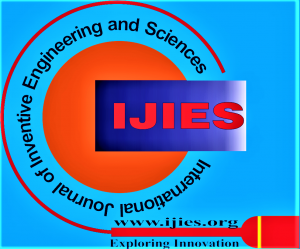![]()
Single Image Dehaze using Deep Learning with Beetle Swarm Optimization Algorithm
R.Prakash Kumar1, Manja Naik. N2
1R.Prakash Kumar, Research Scholar, Department of Electronics and Communication Engineering, UBDTCE, VTU, Davangere (Karnataka), India.
2Dr. Manja Naik.N, Professor, Department of Electronics and Communication Engineering, UBDTCE, VTU, Davangere (Karnataka), India.
Manuscript received on 24 January 2024 | Revised Manuscript received on 13 March 2024 | Manuscript Accepted on 15 November 2024 | Manuscript published on 30 November 2024 | PP: 1-6 | Volume-11 Issue-11, November 2024 | Retrieval Number: 100.1/ijies.C980713030224 | DOI: 10.35940/ijies.C9807.11111124
Open Access | Editorial and Publishing Policies | Cite | Zenodo | OJS | Indexing and Abstracting
© The Authors. Blue Eyes Intelligence Engineering and Sciences Publication (BEIESP). This is an open access article under the CC-BY-NC-ND license (http://creativecommons.org/licenses/by-nc-nd/4.0/)
Abstract: Particles present in the atmosphere cause light to be deviated through scattering, which is captured by the camera, resulting in haze. The process of removing haze in an image is called dehazing. Dehazing is a challenging task in computer vision and surveillance applications. Deep learning methods have been developed and have shown encouraging results. However, these approaches have a significant impact on their effectiveness. In this paper, we introduce an innovative deep learning algorithm, Beetle Swarm Optimisation (BSO), for single-image dehazing. BSO is a nature-inspired optimisation algorithm that uses the social behaviour of beetles as a model to achieve the best response. The dehazing model performs more effectively after the parameters of the deep learning network are optimised using BSO. The experimental results demonstrate how our method effectively eliminates haze from single images. Benchmark data sets are used to assess the suggested strategy. In this paper, the proposed method is evaluated in terms of Peak Signal-to-Noise Ratio (PSNR), Mean Square Error (MSE), and Structural Similarity Index (SSI). Our process also produces dehazed images with high contrast and colour accuracy, as well as more visually pleasing shots. The proposed method, which has applications in surveillance, remote sensing, and self-driving cars, provides a dependable and efficient solution for dehazing a single image.
Keywords: Dehazing, Atmospheric Light, Convolution Neural Networks.
Scope of the Article: Image Analysis and Processing
